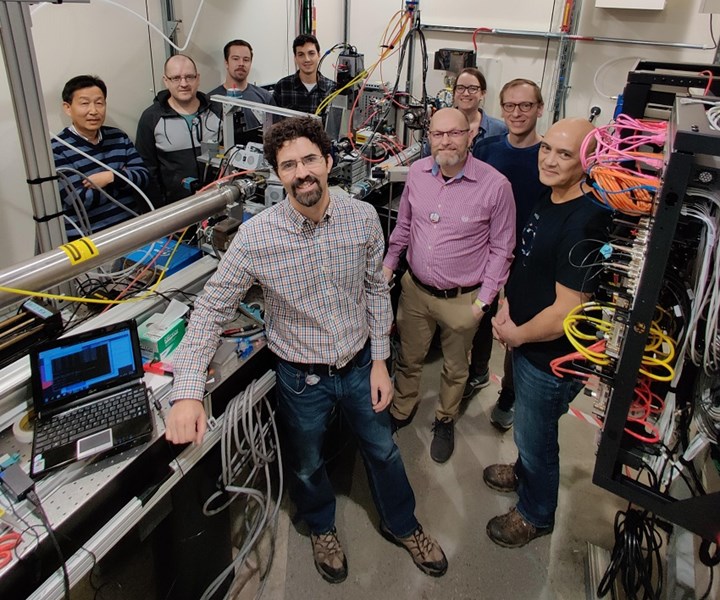Materials research facility develops tools to accelerate composites certification
The AFRL-funded Materials Solutions Network facility uses X-ray beamlines for research into evaluation and modeling of composite structures.

Source | AFRL
The Materials Solutions Network at CHESS (MSN-C) is a new research facility by Cornell High Energy Synchrotron Source (CHESS; Ithaca, N.Y., U.S.), the Air Force Research Laboratory (AFRL; Dayton, Ohio, U.S.) and industry partners, to focus on acceleration of certification for advanced composite structures.
According to the project partners, the facility will enable breakthroughs in materials, processes and designs for aerospace and military components. The goal for the MSN-C is to drive composites manufacturing into an exact science that can be quickly predicted and modeled, enabling shorter times toward certification of new materials and difficult processing methods such as additive manufacturing.
The facility houses two new X-ray beamlines: a functional materials beamline with lower energies, and a higher-energy structural materials beamline. The structural materials beamline uses high energy X-rays to understand the evolving internal structure of composites, ceramics and metals during service and processing conditions.
The functional materials beamline is designed for analysis of soft materials, such as organic molecule and polymer-based materials and composites used in lightweight structural components and organic electronics, during processing and under real-life load conditions. The beamline allows manufacturers and researchers to observe materials in real time and at atomic scale for structural components such as the stationary section of a rotary system for DOD technologies or additively manufactured articles for limited life applications. By obtaining tangible measurement data such as material structure in regards to gaps and interfacial quality, problems and processes can be eliminated sooner and refined for quality control and consistency.
This research are intended to promote understanding of the manufacturing of composites using real-time, high-resolution images. In addition, the beamlines are said to reveal processing effects and variations on thermoplastic and thermoset composites during consolidation processes such as stamping and additive manufacturing.
“The facility is unique because it combines state-of-the-art synchrotron-based resources and techniques with an explicit mission to address current and emerging challenges of advanced manufacturing,” says Arthur Woll, director of the MSN-C subfacility. “This combination of capabilities and mission allows projects at MSN-C to be prioritized by their importance to addressing manufacturing challenges, rather than their relevance to academic scholarship. Furthermore, CHESS is one of only five high-energy synchrotron facilities worldwide, making it particularly suitable for the kinds of measurements needed to address these challenges.”
“We are now able to look at crystallization of thermoplastic feedstock and composites during 3D printing in real time, at one micrometer resolution,” says Dr. Hilmar Koerner, research team lead in the Structural Materials Division of AFRL. “Mapping the detailed out-of-equilibrium and time dependent morphology data of resins and reinforcement filler onto the process history will allow manufacturers to see fine details in hours to a few days rather than months and years, allowing them to make much quicker go/no-go decisions compared to the past.”

.jpg;width=70;height=70;mode=crop)














